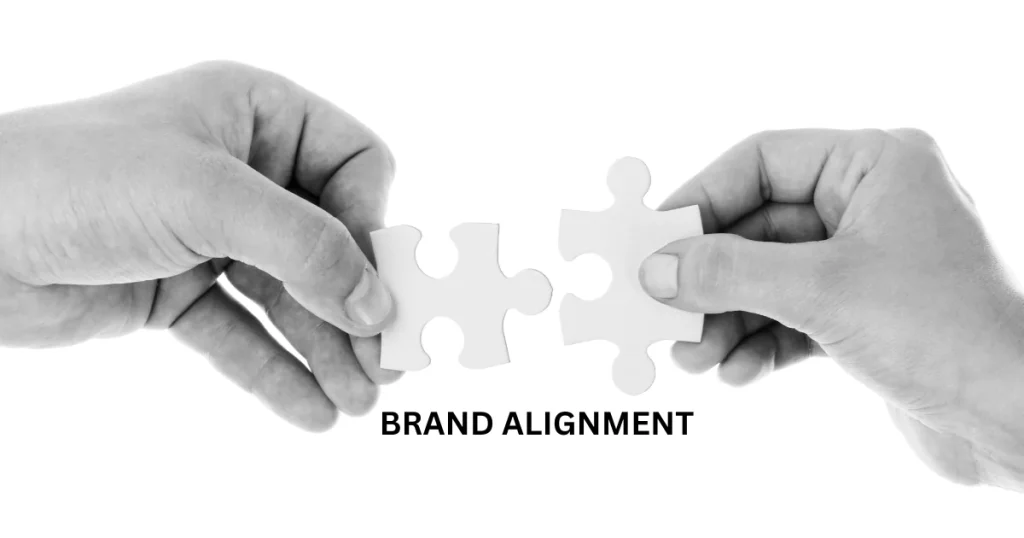Mastering Brand Alignment: How To Maintain Corporate Culture When Your Company Has Growth Spurts

Growth is exciting. Your team is growing, revenue is rising, and opportunities are seemingly boundless. But there is a problem that hits many a leader by surprise: how to keep the company culture that got you this far in the first place.
Culture takes care of itself when you’re small. Everybody knows everybody, decisions are made fast and your values are lived in every interaction. But once headcount doubles, triples or continues growing at an even more rapid clip, that organic culture can begin to splinter. New employees might not know the rules of the game. Remote teams can be isolated. Various departments could have subcultures.
Here is where brand alignment is essential. It’s the strategic pursuit of keeping your company’s values, behaviors and decision-making consistent at all levels and in all locations, no matter how big you get. Without it, you put your very company — the quirky, whose DNA you worship — at risk.
What Brand Alignment Truly Is
Brand alignment is not about having a mission statement on your website or values listed in the break room. Is the depth of the integration of the core identity of your company into everything you do.
Brand alignment is rooted in the notion of “inspire within before sharing externally” (1). If you’re telling customers that you’re innovative, your employees should feel you are giving them license to take creative risks. If you sell yourself as customer-obsessed, inside you should organize around delivering customer results, not internal convenience.
There are many dimensions to the alignment. There’s leadership and employee alignment, leadership walks the talk, and the executives model the behaviors they want to see across the organization. There is alignment across departments among marketing, sales, product, and support to ensure that all are speaking for the brand in a consistent manner. And there’s congruence between what you say you’re about and what your actions say you’re about, so that how money gets spent, who gets hired, and what gets prioritized are all consistent with the values you profess.

The Unseen Costs of Misalignment
When alignment to your brand is lost while you grow, it impacts every area of your business. The first side to feel the effects is often employee engagement. When people don’t understand or relate to the direction the company is going, they disengage. They’re there, they work hard — but not with the burn and creative hunger that fuels outstanding results.
The customer experience also goes by the boards. Unaligned teams render disjointed (or random) service. One department may put a premium on speed while another on detail, and that mixed-message experience can put off clients who expect your brand to set the same standard from the start of a project to the finish.
Decision-making is then internalised, slowed down and disputed. Without common values to inform their decisions, teams argue about deeper principles instead of making progress. This creates bottlenecks, which can impede the very growth you’re seeking.
The talent retention implications of this are arguably worse. Many of your top-performing employees took a job at your company because they believed in that mission and culture. When that culture gets watered down, or worse, becomes contradictory, you risk losing the people who built your success.
Leadership Level Alignment is Indispensable
Building from the Leadership Level
Brand alignment begins with the leadership at a company, but not how a lot of executives think. It’s not about writing more emails about company values or giving more speeches about culture. It’s about pulling every decision you make forward into the light with your values.
Leaders need to start by being crystal clear on what their brand really stands for. This requires going beyond generic values such as “integrity” or “excellence,” and identifying specific principles that shape behavior. For instance, rather than claiming you value “customer focus,” you could describe it as: “We value long-term customer success over short-term revenue opportunities.”
When these principles have been established, they must serve as filters for all significant decisions by a leader. Every hiring decision should be made with these standards in mind, consistent with our budget allocations, product priorities, and strategic partnerships. When employees witness leaders practicing these values daily, they have a better sense of what the company is all about.
Communication becomes paramount, but it needs to be genuine and ongoing. Leaders need to explain not only the what of the decisions they are making, but the why as well. If you turn down an opportunity that could have made you some money but did not make sense for you to take, share that story. If you spend money on employee development in a budget-crunching year because you believe in growth, let us know why you made that choice.
Creating Scalable Culture Systems
Culture can’t just happen through face-to-face and informal chats as you scale. You must have systems that bake in your values into the day-to-day operations of the business.
Your hiring is one of the best brand alignment tools you have. In addition to evaluating skills and experience, create interview questions that help you to understand whether your candidates share your values. Design scenarios that require people to think about problems, make decisions, and work with others. More importantly, get many of your team members involved in the hiring process, so candidates meet your culture from different sides.
Onboarding also becomes important. New hires need to know not only what they will be doing, but why the company even exists and how their role fits into helping realize that vision. This entails more than just policy manuals and org charts — this is about sharing stories about how the company’s values have inspired critical decisions.
Performance management systems should reinforce brand alignment by tracking not only what individuals achieve, but also how they go about it. If “collaboration” is a core value, evaluate people on how they work with others, not just based on their solo work. If innovation is a priority, reward people who smartly experiment, even if they sometimes fail.
Consistency in Communication to Promote Consistent Practices
For brand alignment, communication needs to be often and diverse. You have to say your piece more times and in varying contexts before it really starts to sink in for people.
Regular all-hands meetings are a fine place to hammer home important messages, but they shouldn’t be the only means of communication. Think about developing internal stories about how your values come to life. Tell the story when an employee really pulled out all the stops for a customer. Praise the decision when a team makes a tough call that reflects some of your core values.
Middle management forms an essential part of the communication process. They’re the translation layer between leadership vision and day-to-day execution. Spend time helping managers understand how to take the company’s values and translate that into clear guidance for their teams. Provide them with a toolkit and talking points to enable them to reinforce brand alignment in their day-to-day interactions.
Documentation does matter as well, but it needs to be living documentation that moves with your company. Develop playbooks for employees to allow them to easily interpret how to apply your values in everyday situations. Keep these up to date as new problems and lessons arise.
Measurement and Alignment Monitoring
For it will be hard for you to manage what you don’t measure and brand alignment is no exception. Regular employee surveys can help you measure how well people are getting the message about your company’s values and connecting with them. But look beyond simple satisfaction scores to ask specific questions about decision-making, setting priorities and cultural experiences.
Exit interviews are also a treasure trove of information on where alignment may be going off the rails. People often feel more compelled to provide open, honest feedback about cultural issues they experienced when they leave.
Alignment gaps can also be exposed through feedback from customers. If your customers perpetually tell stories that are counterintuitive to the brand promise, that is often a signal that you have work to do on the inside.
Track metrics that express your priorities. If customer-centricity is at your brand heart’s measure customer satisfaction and retention. If innovation is crucial, monitor how many new ideas are generated and put into play. These metrics help you understand if your culture is translating into the results you care about.
Culture Shifts with Core Identity Intact
Growth has a way of forcing movement, and your culture will change whether or not you steer it. The trick is in being deliberate about what changes and what doesn’t.
But the core values need to stay firm, and how those values are expressed can change. (For example, a concept like “moving fast” may appear different when you are a 10-person startup compared with a 100-person company.) The principle remains, but the machine and software around it will grow.
Geographic expansion is just a more complex problem to tackle in terms of alignment of the brand. Each region may have its own way of communication, work, or culture. It’s not about eradicating those differences, but finding ways to respect local tastes and honor local habits while keeping a core brand identity intact.
There’s another wrinkle to that while working remotely. For digital-first businesses, they must work even harder to ensure shared experiences and cultural touchpoints are present. This could mean virtual coffee chats, online team building exercises or digital forums where people can interact informally.
Why Alignment Pays Off in the Long Term
Growth companies with good brand alignment tend to enjoy the upside long-term. Employee engagement is typically higher, resulting in better performance and less attrition. Customer retention is higher because the experience is truer to the “real thing.”
Decision-making is faster and more effective because people know the principles that have to be applied in making your decision. That can be a formidable competitive edge, particularly in swift markets where speed is everything.
And perhaps most importantly, good brand alignment is the foundation for ongoing growth. Able to scale with more confidence because you know your culture will remain in tact when everyone knows and lives your values.
What You Can Do Now to Improve Your Brand Fit
Begin with a realistic overview of your own situation. Ask your employees to what extent they understand and relate to the values of your company. Find the divide between what you claim to stand for and the way decisions are actually made.
Determine your exact core values. Get past motherhood and apple pie and come up with behavioral guidelines that people can actually do things with. Test these principles against recent decisions: Do they offer clear guidance?
Invest in your managers. They are, in fact, how high-level values get translated into day-to-day behaviors. Empower them with the tools, training and support they need to ensure their people are living your brand in their day-to-day.
Note that brand alignment is not a project but an iterative process. However, as your company grows and changes you should get into the habit of regularly re-assessing and adjusting.





